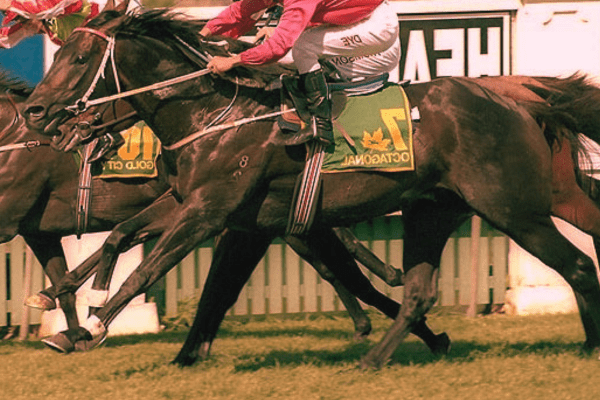The Australian Riding Pony, developed in Australia since the 1970s, represents a unique blend of equine excellence. Influenced significantly by the British Riding Pony, Thoroughbred, and Arabian lineages, this breed stands out for its elegant conformation and versatile abilities. It is a distinct testament to Australia’s commitment to cultivating high-quality equestrian breeds.
History:
Beginning in the 1970s, Australian equestrian history witnessed a pivotal period marked by a sudden shift in pony breeders’ attention. Although initially visiting Britain to import Welsh ponies, these breeders found themselves drawn towards British Riding Ponies known for their elegance and poise.
Key Historical Milestones:
1973 Marks the Introduction of Aristocrat of Flawforth: 1973 marked an important turning point with the importation of Aristocrat of Flawforth, who would greatly shape the Australian Riding Pony breed.
Influence of Bwlch Valentino Offspring: Alongside Aristocrat, two prominent Bwlch Valentino breed colts – Treharne Talisman and The Laird – were brought to Australia. Their exceptional lineage and qualities played an invaluable role in shaping this new breed.
The Development of the Australian Riding Pony:
Early Recognition: These imported ponies bred with local breeds quickly garnered recognition from show exhibitors and breeders across Australia for their impressive appearance and capabilities, drawing in show goers at shows as well as breeders to their stable.
Rise to Prominence: The Australian Riding Pony quickly rose in prominence as it quickly became sought-after breed among various equestrian circles for its elegant, agile movement and showmanship.
Broader Genetic Diversity:
By the 1980s, the breed had expanded, adopting significant bloodlines from both Britain and New Zealand to add diversity and enhance both characteristics and appeal of its genetic pool.
Artificial Insemination’s Role: Artificial insemination allowed for even further diversification by adding to existing bloodlines, and refining breed characteristics further.
Institutional Support and Recognition:
Establishment of the Australian Pony Stud Book Society (1980): This was an essential step toward formalizing and legitimizing this noble breed, providing proper documentation, breeding standards and keeping records for these versatile equines.
Contemporary Significance:
Royal Show Popularity: Since their formal recognition, Australian Riding Ponies have become a regular sight at Royal Shows, delighting audiences with their graceful grace and performance excellence. Representing the pinnacle of pony breeding in Australia while reflecting both international influences and local expertise, their fame continues to endure today.
The history of the Australian Riding Pony can be summarized as one of serendipitous discovery, visionary breeding and successful amalgamation of international and local equine traits. From its inception in 1970 until today, this journey underscores Australia’s important place within global equestrian culture by emphasizing excellence, diversity and the celebration of beauty and agility among horses.

Characteristics:
The Australian Riding Pony, descended from English Riding Pony bloodlines, exudes elegance that recalls show hacks but in a compact form. Their stature and features serve as testament to refined breeding.
Defining Characteristics of the Australian Riding Pony:
Size and Stature:
Height Range: They typically stand between 12.2 to 14.2 hands (50 to 58 inches, or 127 to 147 cm), offering a range that caters to various rider sizes and preferences.
While Australian Ponies do not exceed 14 hands (56 inches or 142 cm), Australian Riding Ponies provide greater height diversity.
Movement and Gait:
Free-Floing Action: One of the hallmarks of this breed is its free-flowing lower action that sets it apart from many traditional pony breeds and contributes to its grace and agility in show rings.
Smooth Movement: The Australian Riding Pony’s movement is marked by effortless grace, making it especially suitable for disciplines which value grace and finesse.
Physical Appearance:
For this breed, solid colors provide a timeless appearance and give it classic style.
Refined Head and Ears: These ponies are famed for their refined heads and ears that reflect their sophisticated heritage.
The Australian Riding Pony represents both beauty and agility in equestrian sports with an elegant presence that draws notice wherever they appear.
Their size and graceful movement make them suitable for a range of disciplines from show jumping to dressage; its unique physical traits such as its stature, gait, physical features make the Australian Riding Pony not only delightful to watch in shows but also pleasurable to ride and work with; making this breed an admired symbol for elegance and versatility in equestrian sports. As such, it has become one of equestrian sports enthusiasts’ favorites representing elegance and versatility through years of competitions!
Versatile Performance:
She excels in show hunter and show pony classes, known for its style and presence. Competitive in Sports: The mare excels at dressage, jumping and eventing events while showing agility and athleticism.
Pony Club Favorite: Perfect for young riders in pony clubs, providing safety, reliability and a pleasant attitude.

Temperament and Trainability:
Intelligent and Willing: Learns quickly, making training fun.
Gentle Nature: Renowned for their friendly disposition, making them suitable for younger riders or riders with less experience.
Adaptable: Remains happy in various environments, from the show ring to rural settings.
Breeding and Development:
Its Selective Breeding: Focuses on improving quality, temperament and performance in breeding stock.
International Influence: Our hybrid breed combines the best traits from multiple breeds while remaining true to Australia’s heritage.
Sustainable Practices: Breeders prioritize the health and longevity of the ponies they raise to ensure a robust future for the breed

